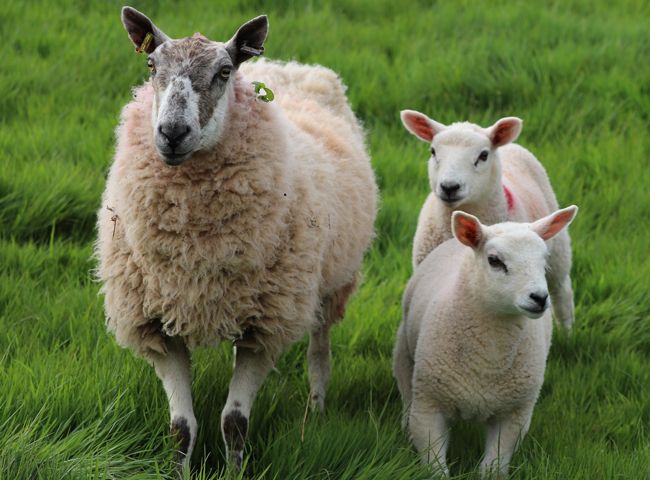Perfect match for the insemination of sheep
Due to the anatomy of their reproductive tract, pregnancy rates in sheep and goats are generally lower when insemination is carried out using conventional methods such as vaginal and transcervical insemination, because the sperm must pass the cervix. Laparoscopic insemination overcomes the “cervical barrier” by intra-uterine deposition of the semen. Satisfactory fertility rates are achieved, while the number of spermatozoa per insemination is significantly reduced.
Laparoscopy requires insertion of a cannula/trocar through the abdominal wall, distension of the abdominal cavity with sterile air or CO2, and visual examination of the abdominal organs with an illuminated telescope. In laparoscopic AI, the abdominal wall is perforated twice: first to visualize the abdominal content, then to deposit the semen in each uterine horn through the second cannula and by means of a semen applicator.
The success of laparoscopic AI is highly dependent on professional equipment. A new complete set of advanced products for performing laparoscopic AI in small ruminants is now available from Minitube:
Together with a laparoscope, Minitube’s laparoscopic AI gun and Robertson pipettes are used for a safe insemination of ewes. With the AI gun, a gradual application of semen into the uterus is enabled. Bulk semen in syringes is applicated without the AI gun, just by attaching the syringe to the Robertson pipette. Also, the transfer of embryos is possible with this technique. The lap AI gun can be easily taken apart for complete sterilization. All metal parts are made of stainless steel and may be cleaned by using cold sterilization or heating. There are two different types of Robertson pipettes available:
The pipette for donor ewes is used especially in females which are FSH stimulated and therefore show thickened uterine horns. Robertson pipettes can be re-used after an adequate cleaning and sterilization, saving costs in lap AI programs.
Why is Lap AI the method of choice?
- Due to anatomical reasons, cervical passage is rarely successful, especially in ewes
- Because semen is deposited directly in the uterus (closer to the site of fertilization), lap AI results in higher pregnancy rates, especially with frozen-thawed semen
- No surgical room required; animals are inseminated under sedation in their familiar environment
- Also used for embryo recovery, embryo transfer and oocyte aspiration
Laparoscopy requires insertion of a cannula/trocar through the abdominal wall, distension of the abdominal cavity with sterile air or CO2, and visual examination of the abdominal organs with an illuminated telescope. In laparoscopic AI, the abdominal wall is perforated twice: first to visualize the abdominal content, then to deposit the semen in each uterine horn through the second cannula and by means of a semen applicator.
The success of laparoscopic AI is highly dependent on professional equipment. A new complete set of advanced products for performing laparoscopic AI in small ruminants is now available from Minitube:
- Laparoscope (telescope): used for visualization of the abdominal organs
- Trocars: used for penetration of the abdominal wall
- Video camera: attached to the laparoscope to monitor the procedure on a screen
- Light source: attached to the laparoscope to illuminate the inside of the abdomen
- CO2 insufflator: inflates the abdomen (creates a pneumoperitoneum) to allow a better view on the organs and to reduce the chance of injury to organs
Together with a laparoscope, Minitube’s laparoscopic AI gun and Robertson pipettes are used for a safe insemination of ewes. With the AI gun, a gradual application of semen into the uterus is enabled. Bulk semen in syringes is applicated without the AI gun, just by attaching the syringe to the Robertson pipette. Also, the transfer of embryos is possible with this technique. The lap AI gun can be easily taken apart for complete sterilization. All metal parts are made of stainless steel and may be cleaned by using cold sterilization or heating. There are two different types of Robertson pipettes available:
- Robertson pipette "Standard" with a needle length of 5 mm
- Robertson pipette "Donor Ewes" with a needle length of 7 mm
The pipette for donor ewes is used especially in females which are FSH stimulated and therefore show thickened uterine horns. Robertson pipettes can be re-used after an adequate cleaning and sterilization, saving costs in lap AI programs.














